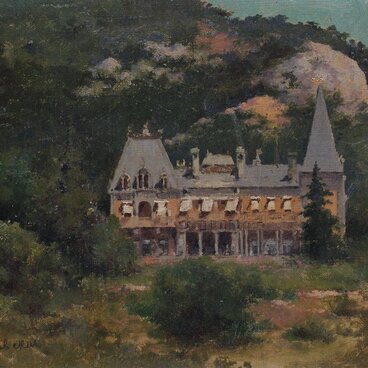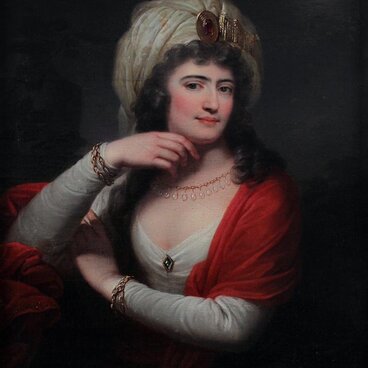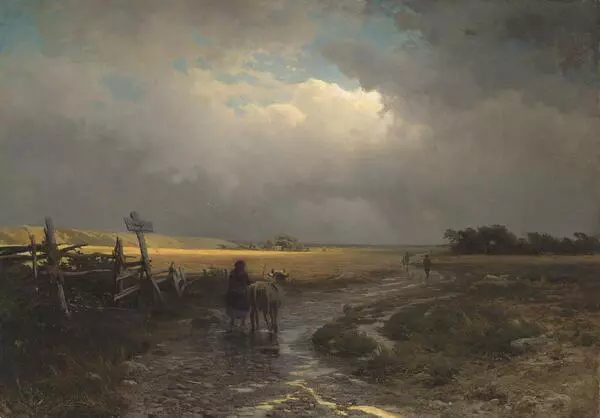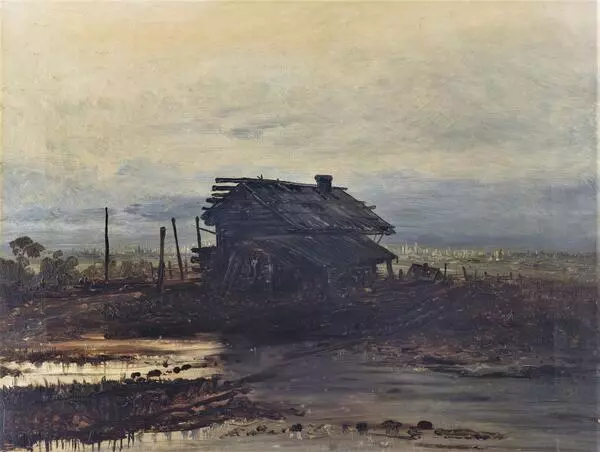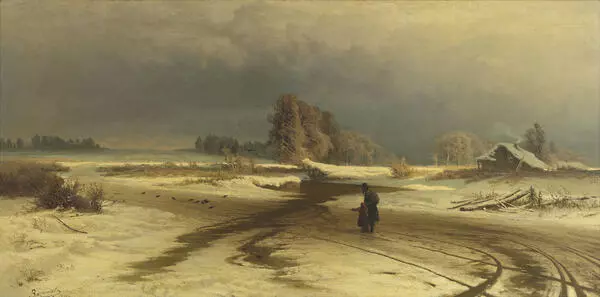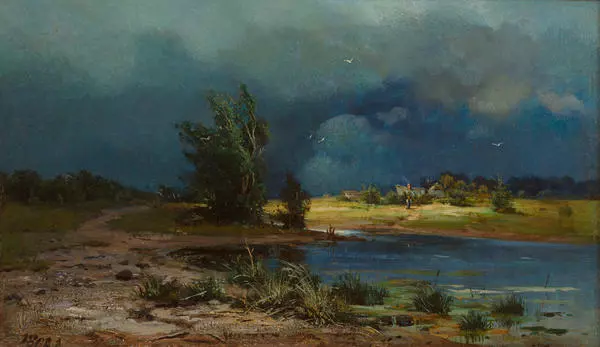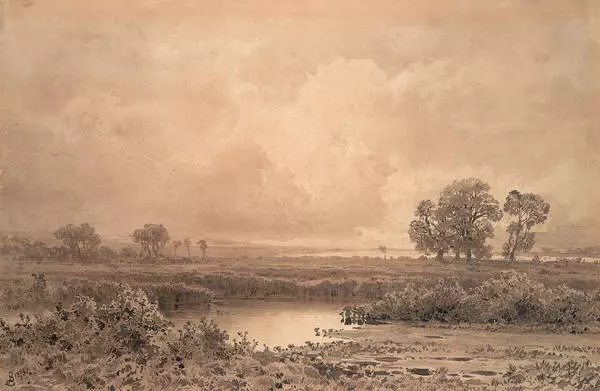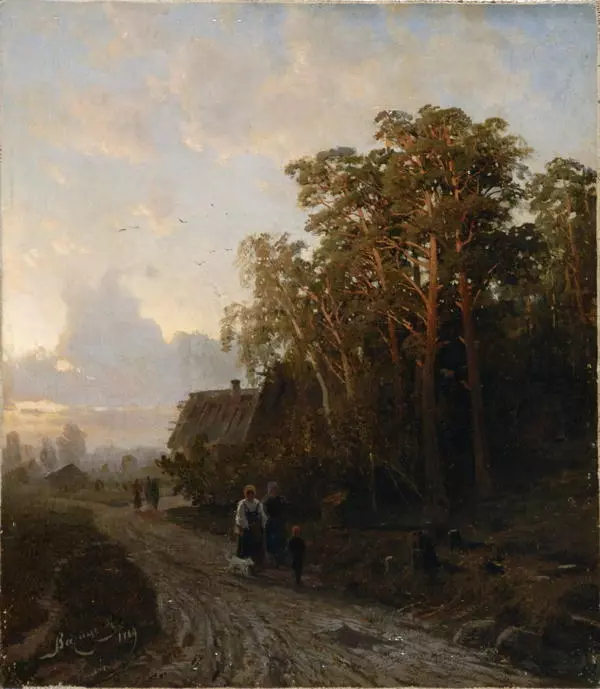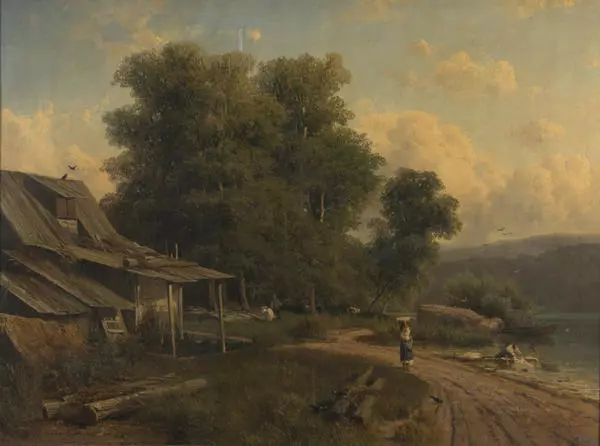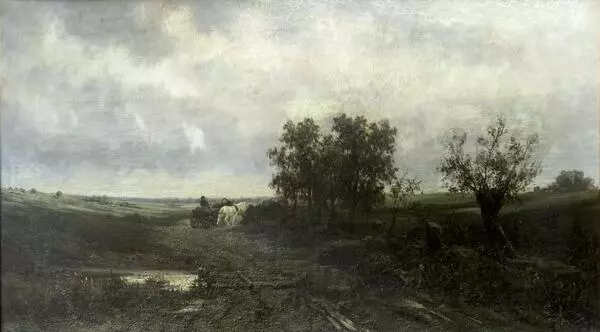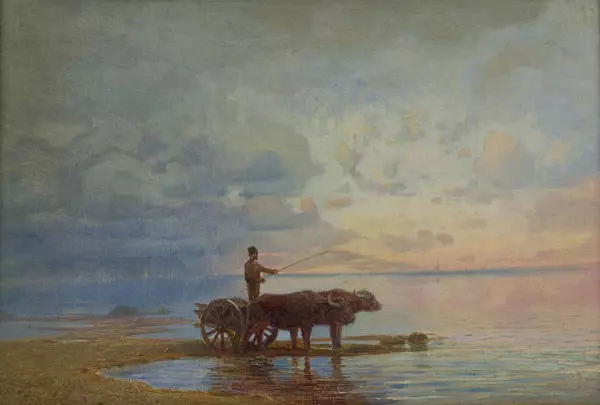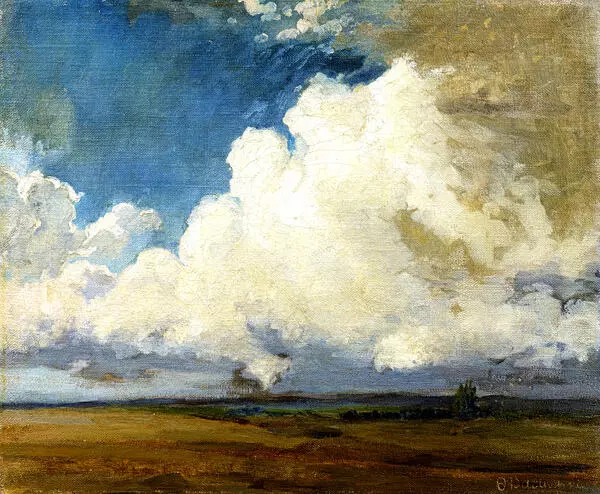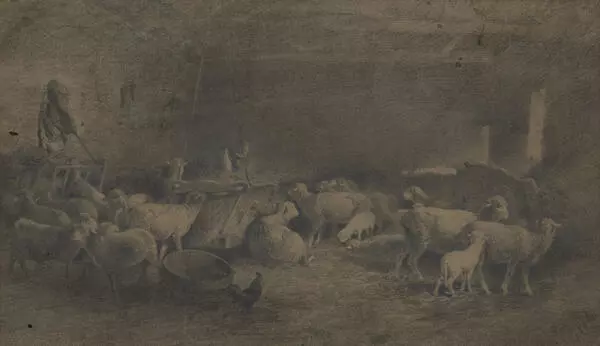The meteoric rise of one of the most talented Russian landscape painters of the 1870s, Fyodor Alexandrovich Vasilyev, was tragically brought to an end by his early death. He did not receive much formal training — he only studied at the drawing school of the Society for the Encouragement of Arts. He would listen to the advice of Ivan Ivanovich Shishkin, but it was Ivan Nikolaevich Kramskoy, who called him “a brilliant young man”, that Vasilyev considered his spiritual teacher. In the very early 1870s, Vasilyev already created landscapes that synthesized the picturesqueness and freedom of painting, which he acquired by making numerous plein-air studies.
As a result of a serious illness, the young painter spent the last two years of his life away from central Russia — in Crimea. He had to get used to the southern nature, which initially failed to “inspire” the artist, who sought to understand and explore it in studies. This small lyrical, air-filled Crimean landscape was transferred to Sevastopol from the State Tretyakov Gallery in 1932. The influence of the Barbizon painters, who worked en plein air, often choosing “emotionally tense”, borderline states in nature, is evident. Vasilyev absorbed novel pictorial and figural discoveries but skillfully reinvented them, using his own plein air observations.
In the color palette, the chromatic uniformity is
punctually observed, as the painter artfully used gray-blue, green,
close-valued tones that fully corresponded to nature. He was very sensitive in
perception of the “colorfulness of the world”, could see numerous shades and
gradients of color even in the mundane. He wrote to Ivan Kramskoy about the
multicolored nature of even the mud in Crimea, fearing that the viewer, seeing
the color relationships reliably conveyed in the paintings, would not believe
the artist. In spite of the sketchy nature of the work, the composition is
clearly structured: the foreground is detailed with confident, bold strokes,
the middle ground is beautifully highlighted, and in the distance, the soft
ridge of Crimean Mountains seems to “support” the sky with moving
moisture-carrying clouds. It is for a good reason that the artist Nikolai Ge
once enthusiastically exclaimed that he had first seen “moving sky” in the
paintings of that “wonder boy”.

